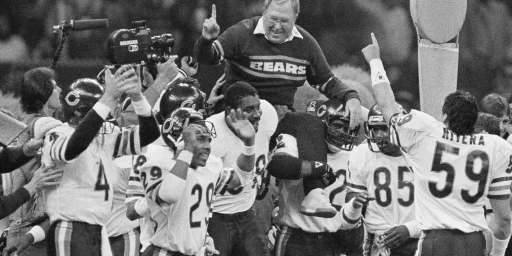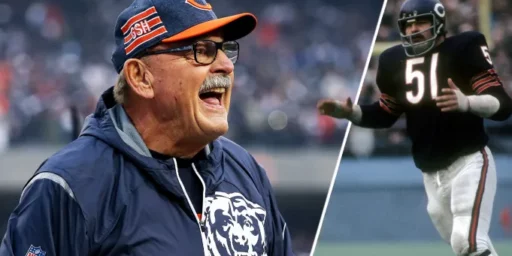Vasher’s 108 Yard Field Goal Return New NFL Record
Chicago Bears cornerback Nathan Vasher’s 108-yard return of a missed field goal at the end of the first half capped a bizzare NFL weekend in which all four teams from the woeful NFC North Division won.
Exhausted Vasher runs into NFL record book (Chicago Sun-Times)
Glory can be hell. Just ask Bears cornerback Nathan Vasher, whose legs started cramping as he breathed through an oxygen mask in the locker room on Sunday after he returned a missed field-goal attempt 108 yards for a touchdown on the last play of the first half. “I’m still tired,” Vasher said with a smile as he addressed the media after the game.
And why not? His return was the longest of any type in NFL history, topping the 107-yard return of a missed field goal by Baltimore’s Chris McAlister in 2002 and the 106-yard kickoff return by Green Bay’s Al Carmichael against the Bears in 1956.
“I felt like I was running the 400 meters out there,” Vasher said.He covered a lot more ground than 108 yards. The play was set up by the San Francisco 49ers’ decision to attempt a 52-yard field goal despite a 26 mph wind that was gusting up to 47 mph during the game. Vasher lined up outside left, as he usually does on kickoffs, then dropped back into the end zone before the ball was snapped. San Francisco kicker Joe Nedney kicked a high, floating ball that could have been timed by a sun dial. It did not have the distance for the uprights because it was held up in the wind, and Vasher dropped back and caught it over his left shoulder. “I can’t believe he caught the ball, to be honest with you, how much that ball was moving,” Bears quarterback Kyle Orton said. “He made a nice catch. We practice that play in special-teams practice and it looks like a waste of time, and it finally came through.”
Vasher said the return is called “Bench Left,” a perfect name considering the returner runs left toward the Bears’ bench. Vasher ran that way to the 14-yard line before meeting resistance and performing his version of a Denis Savard-style spin-o-rama. He put his hand down to keep from falling, and while he regained his balance, reserve safety Brandon McGowan sealed a couple of 49ers on the left side of the field. Vasher cut back right, Forrest Gump-style, effectively running straight across the field while teammates raced to get in position to block. He outran Eric Heitman to the corner, then picked up blocks from Brian Urlacher and Chris Harris before Lance Briggs blew up holder Andy Lee. Finally, Urlacher dived at fullback Steve Bush, allowing Vasher to collapse into the end zone.
Vasher said he picked up a ton of blocks, including at least three from Urlacher, who had to slow down for him a couple of times. It helped that the 49ers had virtually no speed on the field. “With the field-goal team being out there, there were no defensive backs, no wide receivers,” Vasher said. “I was out there with the big boys.”
Quite impressive. What I don’t understand, though, is how the record can be anything more than 100 yards, the length of the field. Why is the end zone counted as part of the yardage?






One of the NFL’s little quirks, I suppose. Correct me if I am wrong, but the NCAA does not count the yards within the endzones.
I will admit that it was fun watching some of the field goals in that game.
Because the end zone is approximately ten yards deep, it adds another ten yards to field-goal attempts. The reason a FG attempted from the 35 is 52 yards is because they’re adding 7 yards for the snap to the holder plus 10 yards for the distance from the goal line to the end zone. I guess they figure that if they’re going to give credit for long plays, they’re going to start from the back of the end zone — the farthest a person can go.
What I don’t understand is: if they do this for returns and such, why is it that a TD pass from the 5 to the back of the end zone only counts as a 5-yard TD pass, even if the ball actually traveled 10 yards from the line of scrimmage?